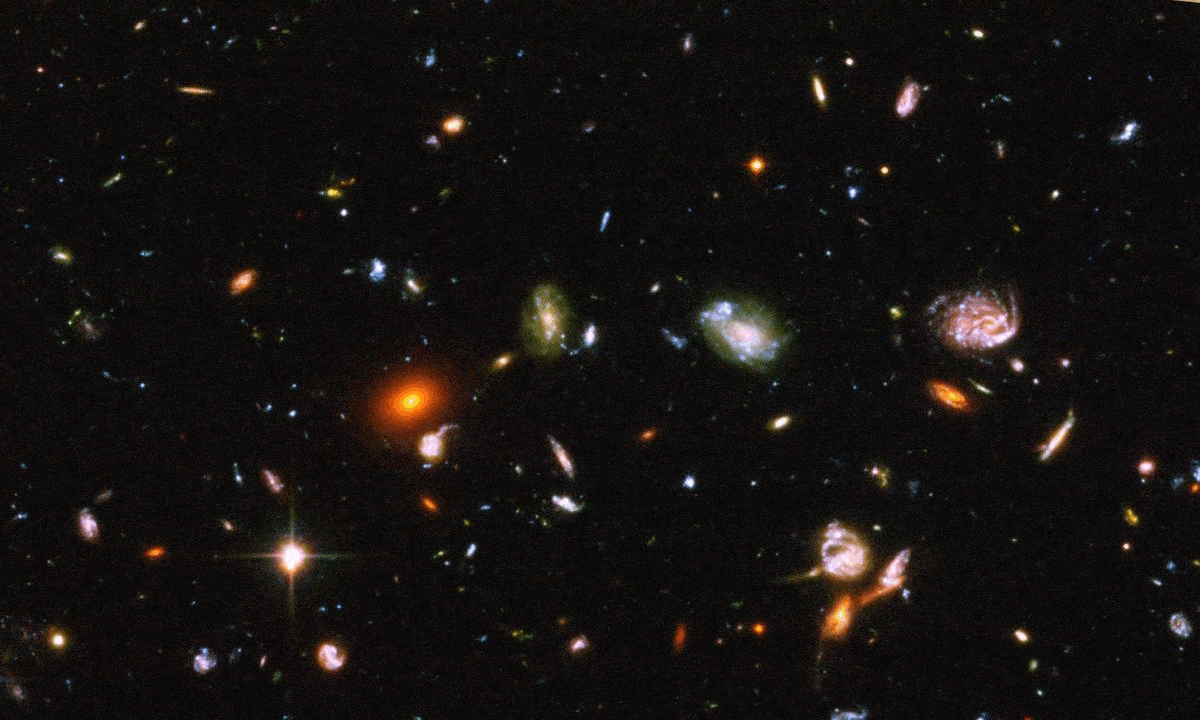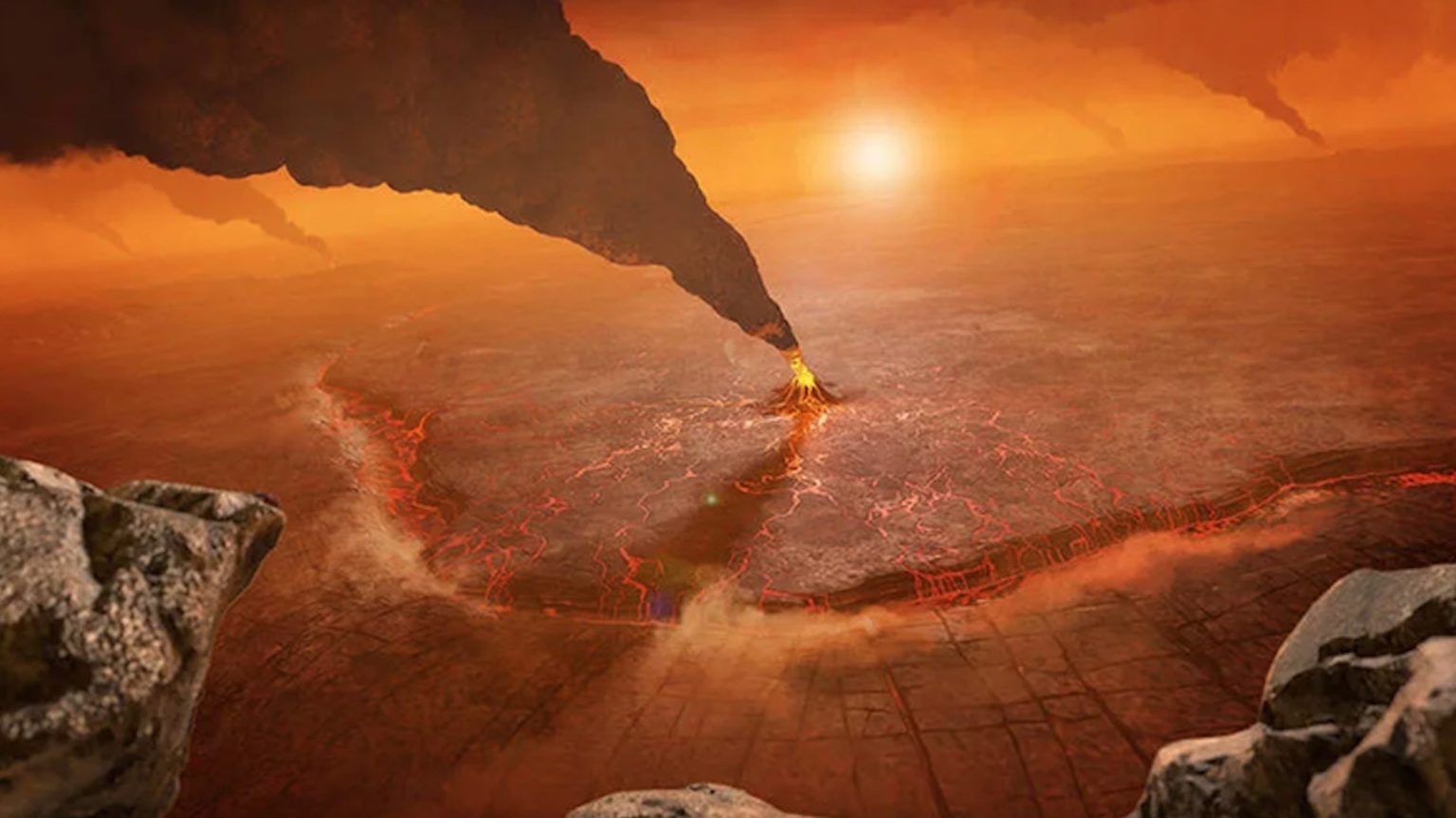Throwback Thursday: How Do We Know How Many Galaxies There Are In The Universe?
100 years ago, we thought the Milky Way was the full extent of the Universe, containing everything. Now, we know we’re just one of many. But how many?
“The human mind is not capable of grasping the Universe. We are like a little child entering a huge library. The walls are covered to the ceilings with books in many different tongues. The child knows that someone must have written these books. It does not know who or how. It does not understand the languages in which they are written. But the child notes a definite plan in the arrangement of the books—a mysterious order which it does not comprehend, but only dimly suspects.” -Albert Einstein
One of the bravest things that was ever done with the Hubble Space Telescope was to find a patch of sky with absolutely nothing in it — no bright stars, no nebulae, and no known galaxies — and observe it. Not just for a few minutes, or an hour, or even for a day. But orbit-after-orbit, for a huge amount of time, staring off into the nothingness of empty space, recording image after image of pure darkness.
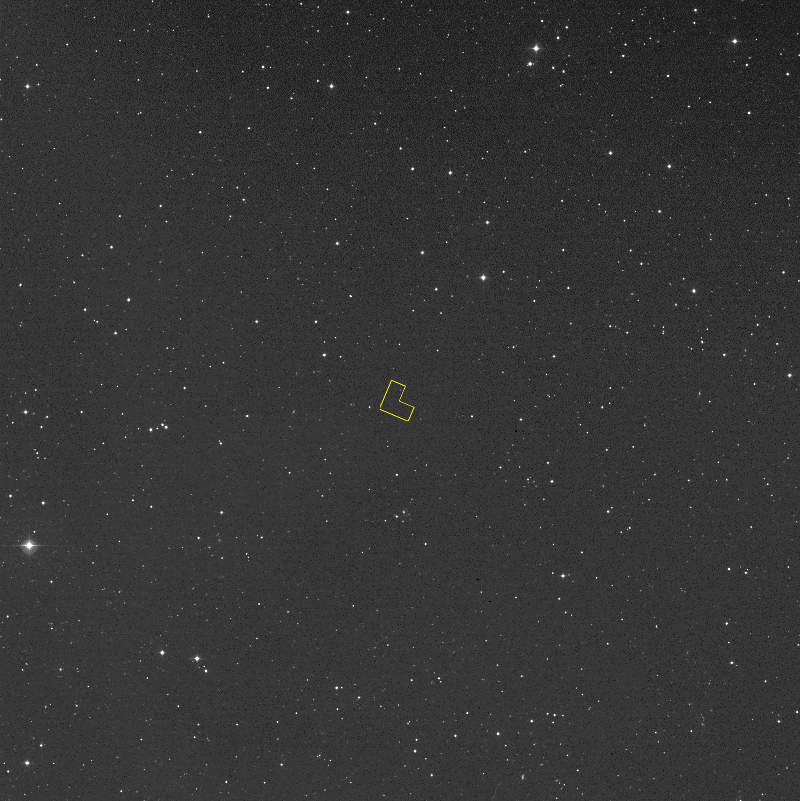
This was the location of that region back in the early-to-mid 90s, and it was a tremendous risk. We’d point at this region of the sky, opening the eyes of the Hubble Space Telescope — the most powerful (and most expensive) telescope ever created by humanity — collecting all the light we could for as many minutes as we could, and create an image.
We knew that we wouldn’t see anything except maybe a handful of faint dwarf stars, at least with one image. But we could take another, and another, and another, and accumulate more images of this same location. Over a total of 10 days of observing time, Hubble took a photograph of the same exact patch on the sky 342 times. They then added up the light from all 342 of these images. The result?
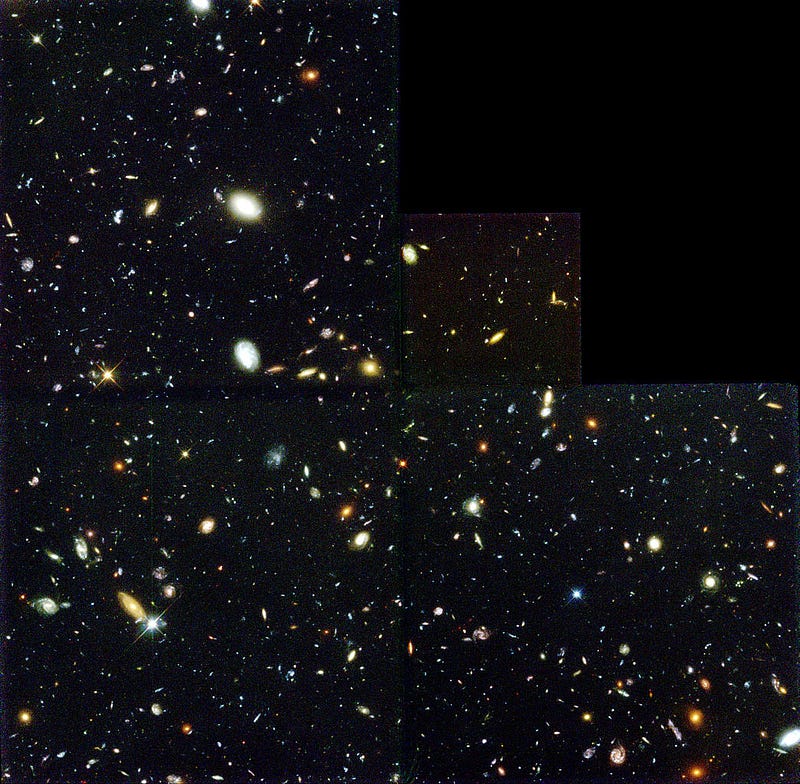
Every point of light in this image (except for about 6 which are dim stars) is a galaxy. Thousands upon thousands of new galaxies were discovered. Some were only a few million light years away, others were over ten billion light years away. What we learned from this is that:
- There are a huge number of galaxies, and they formed very early on in the Universe.
- They exist in great abundance, and even though they aren’t distributed uniformly, they are literally everywhere we look.
- And perhaps most importantly, we learned how to estimate just how many galaxies there are in the Universe!
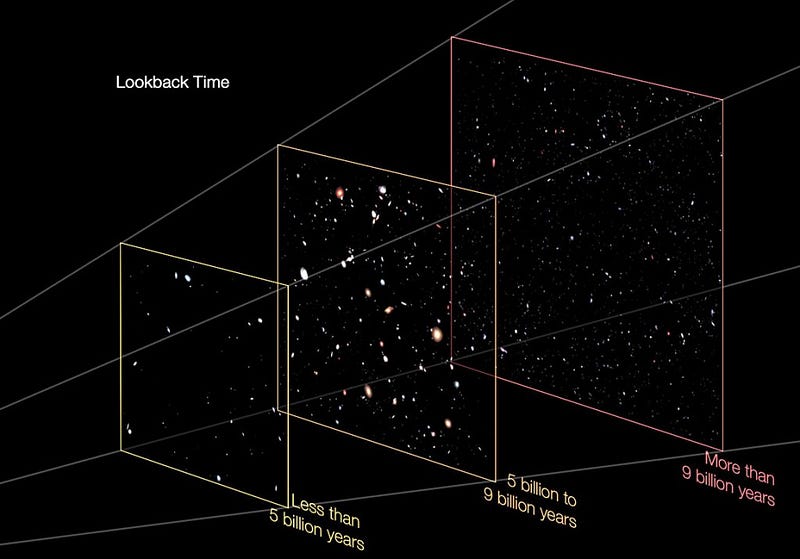
You see, when we look at a region like this, we’re only grabbing a very small fraction of the sky. Yet in an image like this — the original Hubble Deep Field — we’re capturing literally thousands of galaxies! If you can compute what fraction of the sky you’re capturing with your image and the number of galaxies that are in that region, you’re well on your way. Because if you assume that this region you grabbed, one that was deliberately devoid of known stars, galaxies and nebulae, is typical of space, then you can extrapolate how many galaxies there would be in the Universe over the entire sky!
But you wouldn’t be satisfied with just the number of galaxies you found on your first attempt, would you? No, of course not! Well, nearly a decade after this, they installed a new, better camera than the old WFPC2, called the Advanced Camera for Surveys. And to one-up the Hubble Deep Field, they picked a different blank patch of sky, went even deeper, observed for an even longer period of time (11 days), and created the Hubble Ultra Deep Field.
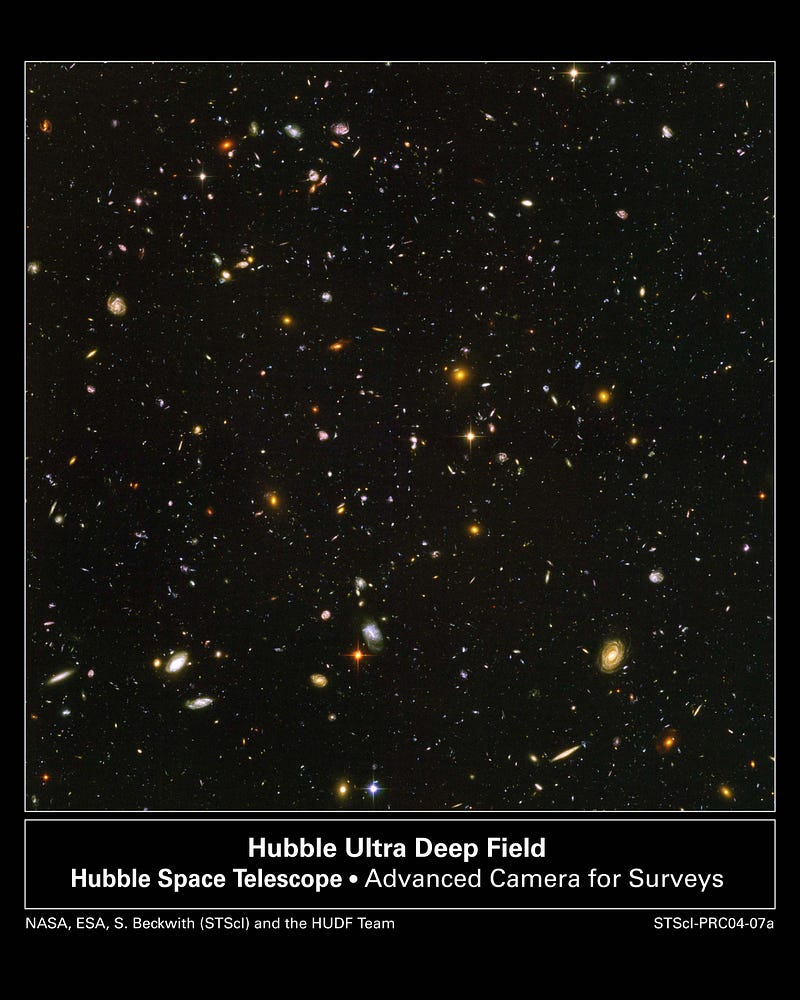
By extrapolating these results over the entire sky, we were able to figure out — at minimum –how many galaxies there are in the entire Universe. I even made a video about it.
But that’s not the end of the story, not by a long shot. You see, there might be at least 100 billion galaxies in the Universe, based on what we’ve observed, but there might be more. Galaxies that are too dim to observe with “only” 11 days of Hubble data. Galaxies that are redshifted too far for even Hubble’s farthest infrared filter to pick up. Galaxies that might appear, if only we had the patience to look for longer.
So that’s exactly what we did, looking for a total of 23 days over the last decade — more than twice as long as the Ultra-Deep Field — in an even smaller region of space. Ladies and Gentlemen, may I present to you the Hubble Extreme Deep Field!

You may not have ever seen this picture before, but it might look familiar anyway. That’s because the Extreme Deep Field (or XDF) is actually a part of the Ultra Deep Field, which you could see for yourself if you rescale both images and rotate them at 4.7 degrees relative to one another! I’ve gone ahead and done just that, and presented some highlights of both images — side-by-side — so you can see the comparison for yourself!

The XDF, as you can see, not only reveals galaxies in more detail than the less-well-exposed HUDF, but it also reveals new galaxies that were altogether unseen by the less-well-developed image.

The way light-gathering works is you can typically see 41% as deep when you observe for twice as long, something astronomers are intimately familiar with. So what we’d expect — assuming that we’re only limited by how faint we can see — is that the XDF would see 41% more galaxies than the older image.
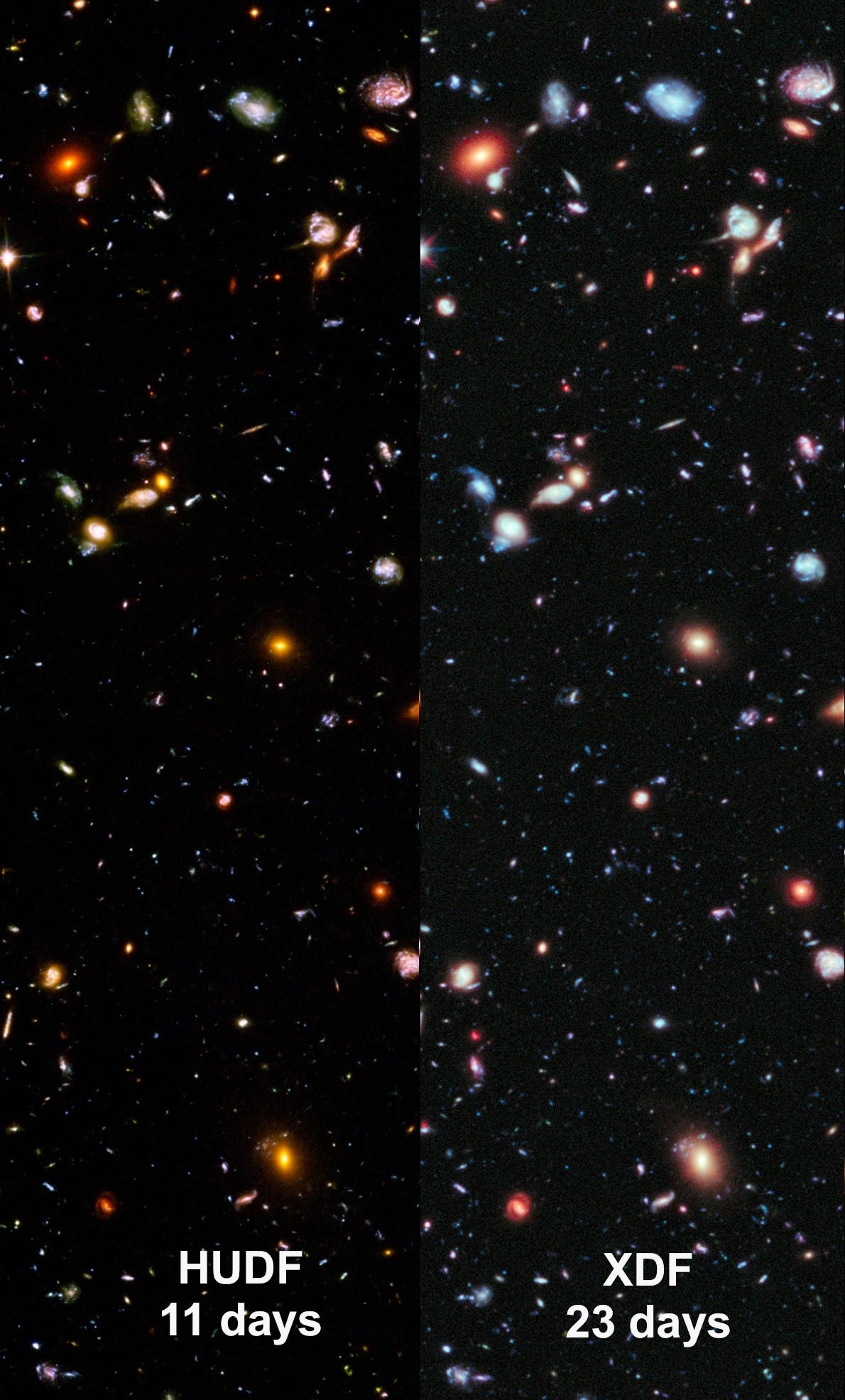
This actually turns out to be pretty close to what we observe, which tells us that we probably haven’t reached the limit to what’s out there yet! Indeed, the fact that Hubble sees fewer galaxies whose light-travel-times to our eyes is greater than 9 billion years than between 5-and-9 billion tells us that it most likely hasn’t hit the limit of what’s actually there. Ideally, the James Webb Space Telescope — capable of seeing even more distant galaxies than Hubble — will get us a number closer to the truth in the next decade.
But in the meantime, we can use the eXtreme Deep Field to set a lower bound on how many galaxies there ought to be in the Universe based on what we’ve seen.
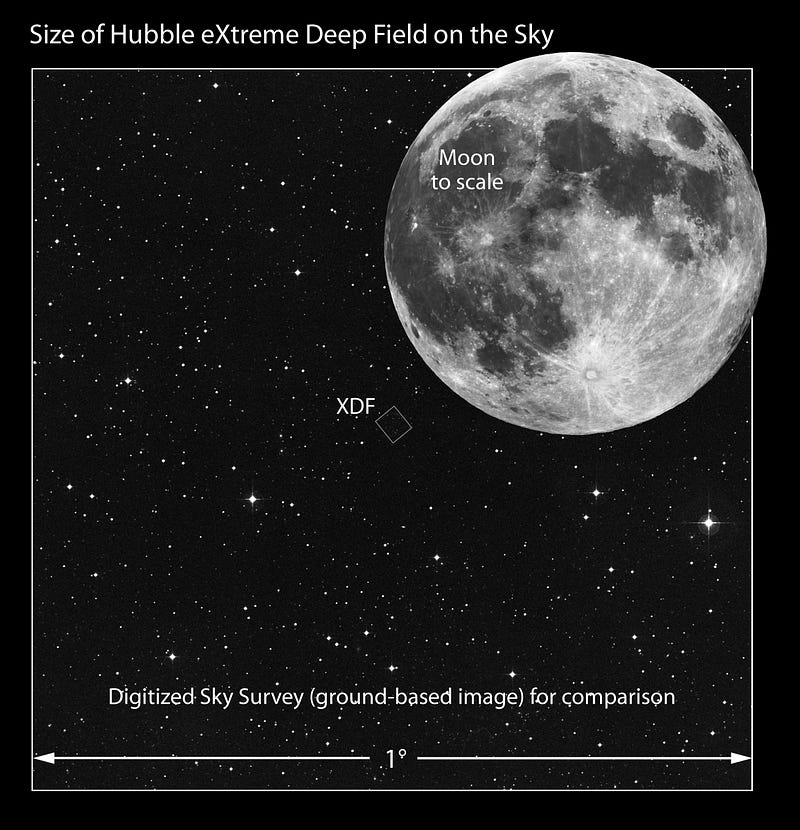
The Hubble eXtreme Deep Field encompasses a tiny region of the sky, shown next to the full Moon and a 1-degree box for comparison. Yet in just this tiny XDF region, Hubble managed to spot an incredible 5,500 galaxies, or a greater number than is contained in our entire local supercluster.
If you assume that the XDF is a typical region of outer space, you can calculate how many XDFs it would take to fill the entire night sky; it’s about 32 million. Multiply by the number of galaxies you find in the XDF, and that’s how you arrive at our best lower limit: about 200 billion galaxies in the Universe.
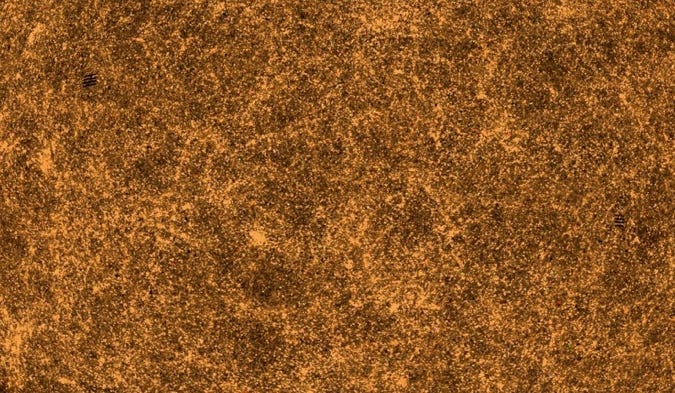
Based on both simulations and our best less deep observations, this number is no surprise, and is maybe even a little low.
By the time that James Webb comes around, I wouldn’t be surprised to find that there are maybe even close to a trillion galaxies in the Universe; we just don’t have the tools to find them all yet. In the meantime, that’s how we know how many galaxies there are in the Universe!


